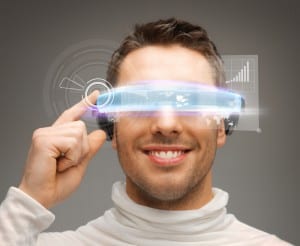Wearing Tech on Your Sleeve
 At a recent meeting of the National Convergence Technology Center’s (CTC) national Business and Industry Leadership Team (BILT), the subject of wearable technology came up. The consensus among this esteemed group is that the sky is the limit for that side of the IT industry, which means plenty of opportunities for IT students. More and more, IT is coming out of the server rooms and into consumer products, most of it likely networked to an “anchor” smartphone. With all of the hype surrounding Google Glass and the iWatch, it’s clear that the wearable technology innovation revolution is already well under way.
At a recent meeting of the National Convergence Technology Center’s (CTC) national Business and Industry Leadership Team (BILT), the subject of wearable technology came up. The consensus among this esteemed group is that the sky is the limit for that side of the IT industry, which means plenty of opportunities for IT students. More and more, IT is coming out of the server rooms and into consumer products, most of it likely networked to an “anchor” smartphone. With all of the hype surrounding Google Glass and the iWatch, it’s clear that the wearable technology innovation revolution is already well under way.
Wired’s Mat Honan agrees. In a recent article, he discussed how wearable tech will likely mean a multitude of single-purpose wearable devices, not a one-tool-does-it-all device. Indeed, Honan cites Intel as believing that wearable tech will ultimately become more ubiquitous than phones or computers.
Research Directory at Techology Research Company Gartner Annette Zimmermann has said in another recent article that wearable computer market “will grow 38 percent” this year.
Here’s a few of the devices and companies leading the way in this field:
- Oral B offers a new toothbrush that connects to a smartphone app that will show you the latest news and weather while you brush for two minutes.
- Hexoskin makes a “Smart Shirt” for exercising that uses sensors to track not only the wearer’s vital signs, but also motion to measure and track things like steps or acceleration.
- Vital Connect is developing a wearable sensor that will allow caregivers to monitor outpatients from afar on a short-term basis. The data is encrypted, of course, and follows HIPPA gudielines.
- ProGlove presented at Intel’s big “Make It Wearable” event. Their glove offers a multitude of functions and tools for factory workers, from scanning bar codes to tracking movements to diagnosing problems.
- Chrono Therapeutics wants its new device to help smokers quit. The wearable device delivers precise nicotine doses in sync with a smartphone app that monitors the user’s nicotine levels and slowly decreases it over time.
- Sleep Image hopes its consumer wearable will offer a cheaper way to diagnose dangerous sleep disorders by comparing heath rhythm to respiration. Similar in-patient sleep analyses can cost thousands of dollars.
- Clarity offers a way to measure China’s awful air quality in real-time using a keychain gadget and the power of crowdsourcing.
